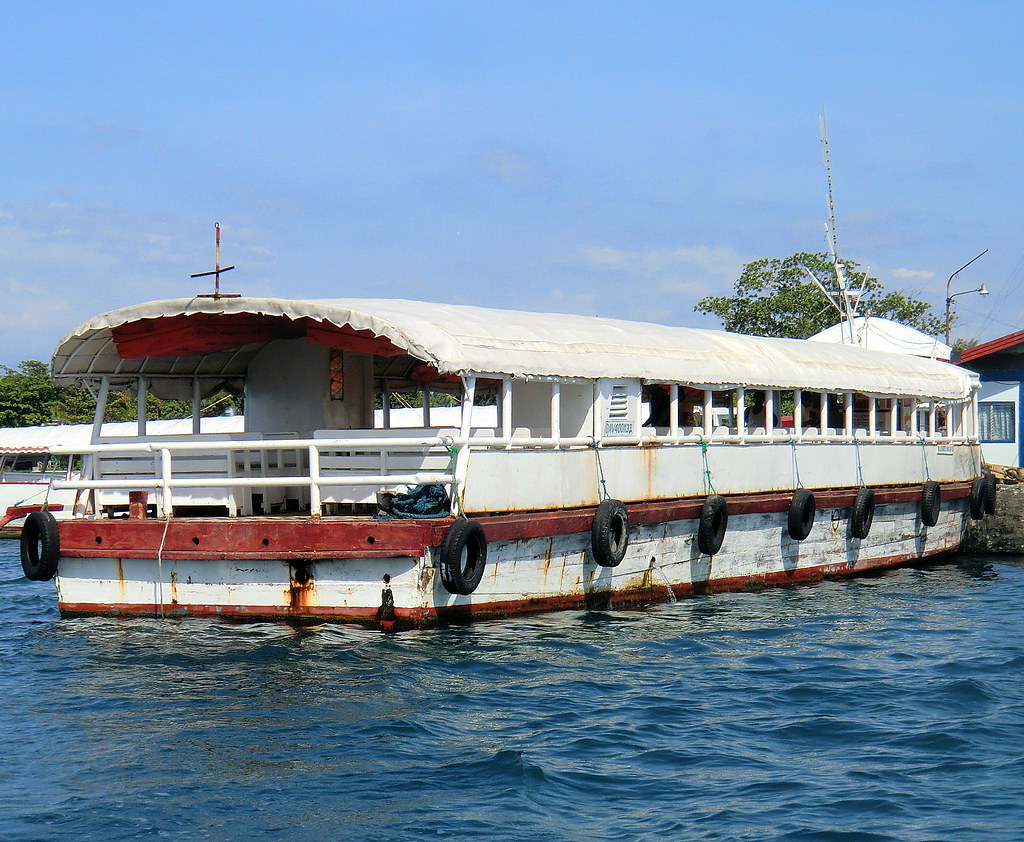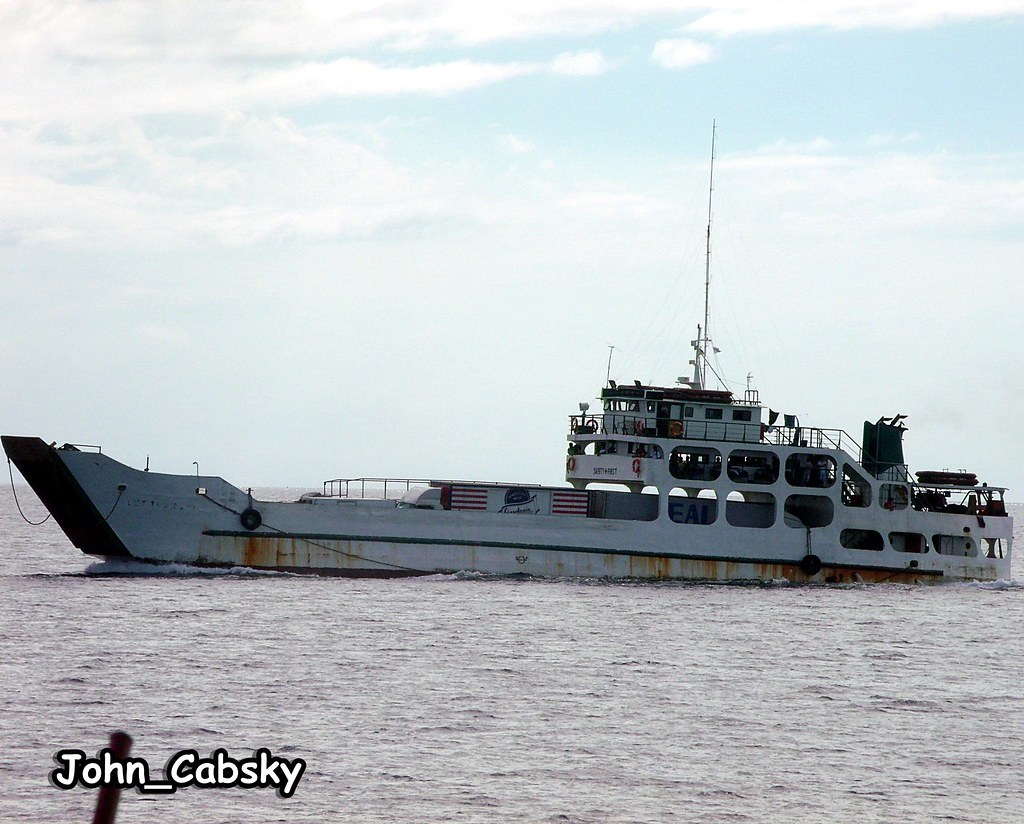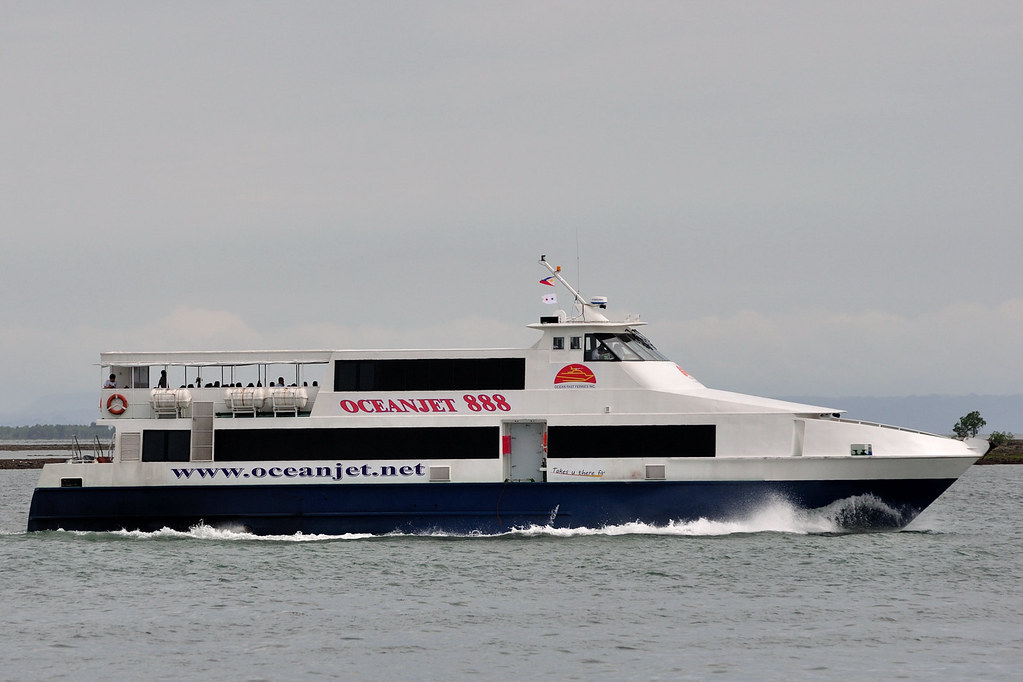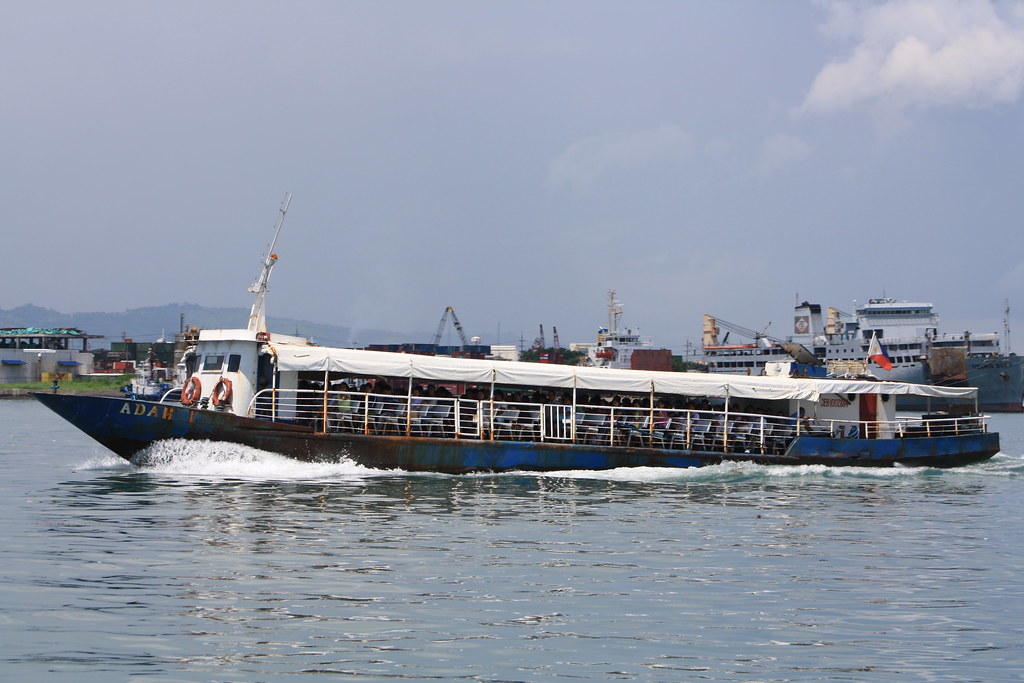The Philippine Ship Spotters Society classifies ferries according to use and design. It does not merely use the traditional “passenger-cargo” or “passenger” as not much insight can be gleaned from that.
Traditional ferries are first determined according to use. Multi-day ferries are called “Liners”. Then there are “Overnight Ferries” and the name speak for itself. Then there is the ubiquitous “Short-distance Ferries” that bridge islands well within sight of each other and usually do two or more voyages a day with some running around the clock like in Batangas-Mindoro and Matnog-Allen. Short-distance Ferries meanwhile usually do only a once-a-day sailing and after arrival at morning waits for the next night to depart. Liners do the long-distance routes and they are basically based in Manila to do the routes to Visayas and beyond to Mindanao.
Liners as such are bigger, faster and have more amenities. They are practically hotels on sea. Accommodations range from Economy with bunks to Tourist Class which are big, airconditioned rooms with accommodation for dozens or even a hundred passengers in bunks to First Class Cabins which usually accommodates only four persons with its own toilet and bath and wash. Highest class is he Suite which usually accommodates two persons in beds and will have a sala, a provision for dining, cabinets and a dresser.
Liners are designed to feed over a thousand passengers and will have game rooms, beauty salons, bars and other amenities like disco, spa, or library. There will be lobbies, lounges and books/magazines and board games for rent for passengers to while away the time and also viewing decks and a playground/promenade area in the weather deck. Many liner restaurants operate nearly 24 hours and snack (not the junk food kind) will always be available along with refreshments.
Overnight ferries have restaurants too but meals are not free unlike in the liners so the restaurants tend to be smaller and food offerings simpler. There is also several snack bars which serve the instant kind of foods. Their accommodations also range up to Suite level though some only have Cabin as the highest class.


Short-distance Ferries which have transit times from a sub-hour to a few hours will only have seats and the highest class is usually n airconditioned Tourist Class with accommodation for sitting. However, some shipping companies also use overnight ferries in short-distance routes and so the accommodations and size of these along with the speed are superior. These are still classified as Overnight Ferries because they have the distinguishing feature of this class which is the presence of bunks. On the other hand, some shipping companies use Short-distance Ferries on overnight routes. Still their classification with be Short-distance Ferries if they are not equipped with bunks. Short-distance Ferries have the most limited food offerings with only the instant kind as in instant noodles, siopao, sandwiches, biscuits and candies. It is not equipped with baths and amenities might not be higher than a videoke. Many do not even have a Tourist Class.


The design of the ship is also incorporated in the classification. The first division is if the ship is a RORO (Roll-on Roll-off) vessel or a Cruiser. ROROs are designed to load vehicles while cruisers use the old breakbulk type of loading either using booms or porters. So there are “Liner-ROROs” and “Liner-Cruisers” and “Overnight Ferry-ROROs” and “Overnight Ferry-Cruisers” and “Short-distance Ferry-ROROs” and “Short-distance Ferry-Cruisers”. The ROROs are more numerous than the Cruisers.
Aside from that some of our ferries belong to the “Motor Boat” class and officially they are called “Motor Launches” maybe because by international convention all ships with passenger capacity of 12 and below are “Boats” and all above that are “Ships”. PSSS use the traditional “Motor Boat” as it signifies the old kind of design and they are not really “Launches” as they are designed to carry a significant amount of cargo. Our “Motor Boats” are generally wooden-hulled and this is one feature that sets them apart. There are “Overnight Ferry-Motor Boats” and “Short-distance Ferry-Motor Boats” although it is difficult to still find an example of the latter. Motor Boats do not have many amenities and for sleeping these usually just offer folding cots or “tejeras”.
Many of our “Motor Boats” are of the “Cargo-Passenger” type now which means they are primarily for cargo. They have fixed routes and that what separates them from “Trampers”. However, they do not have fixed schedules of departures as filling of cargo takes precedence and that is true even in the use of space and that is why they still use the old “tejeras”. As a consolation for having to wait they offer cheap fares and then many of the passengers themselves are tied to cargo whether as owners, agents or trusted help and some are connected to the crew or the shipping company one way or another like being a relative.


We also have LCTs which now mean “Landing Craft Transport” but which were copied from the LCTs and LCMs of World War II. These are simple steel-hulled ferries primarily designed for loading vehicles. Their accommodations are small and designed mainly for just dozens of passengers. However, we also have Hybrid LCTs that look like conventional LCTs but are equipped with much better passenger amenities and are faster as they were also meant for passengers unlike the conventional LCTs where passenger comfort is an afterthought and are just designed for the few passengers and mainly for the passengers of the buses they take in. Almost all LCTs are “Short-distance Ferry-LCTs” and there are a few example of “Overnight Ferry-Hybrid LCTs”.


Aside from ferries which are also designed to take in a significant or large amount or cargo we also have ferries that are primarily for passengers. The most prominent type are the “High Speed Crafts” or HSCs. This is divided into two, the “Catamarans” and the “Fastcrafts”. Catamarans have two or more hulls (a trimaran if three) and Fastcrafts have single hulls. The HSCs have high power to weight ratio to give them high speed. The Philippines has no definition of what is a HSC. In other countries one main meaning is these crafts travel at higher speeds than conventional ferries. Since in the country the fastest liner only runs 20 knots then PSSS uses this speed as the minimum speed of HSCs unlike the 25 or 30 knots of the more advanced countries.
There are also crafts that look like HSCs but are equipped with less powerful engines and can’t travel at 20 knots. These are called internationally as “Medium Speed Crafts” or MSCs. HSCs and MSCs can have aluminum (or more precisely aluminum alloy) or FRP (Fiberglass Reinforced Plastics) hull to save on weight. Many are steel-hulled especially the Malaysian fastcrafts.


We also have “Motor Launches” according to PSSS classification. These are the riverboat type of design that looks like launches although not as slim for they are designed to carry more passengers. “Motor Launches” (MLs) have no outriggers and are steel-hulled or fiberglass-hulled. Motor Launches are generally used for very short distances and they were not meant for the open sea.
The last main type are the “Motor Bancas”. These are wooden boats with outriggers. PSSS concerns itself with only the “Large Motor Banca” kind as to list all will result in a deluge as this type is our most ubiquitous type with some carrying less than ten passengers. “Large Motor Bancas” (LMBs) carry several dozens up to nearly a hundred people and some even have two decks. These are usually powered by engines sourced from trucks. Some have two engines and two screws and the fast ones are even faster than the “Short-distance Ferries” (SDFs).
The LMBs are significant not only in size but because they still cannot be replaced by the SDFs. These are the connections of the small islands and some of them have relatively long routes lasting up to 7 hours and even more. Some actually travel overnight but instead of bunks they are equipped with benches with soft cushions.
Generally, LCTs, HSCs, MBs, MLs and LMBs no longer carry the appendage “Short-distance Ferry” because with very, very few exceptions they are all SDFs anyway. If they are not SDFs then the appendage “Overnight Ferry” is used.
All in all these types will encompass a total of well over 500 ferries that are still active and sailing. These are the true bridges of our islands.





Nice one mbb8356
LikeLike